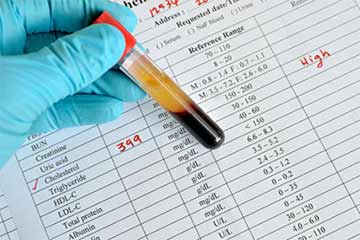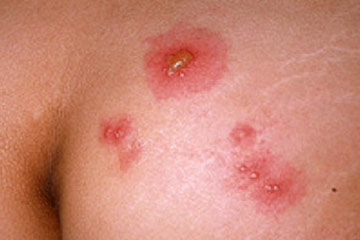Ebola hemorrhagic fever. Travelers information
What is the current situation?
According to the Ministry of Health of Guinea, cases of Ebola have been confirmed in Guékédou Prefecture and in the capital city of Conakry.
Suspected cases of Ebola, including some deaths, have been reported but not yet confirmed in Guékédou, Kissidougou, Macenta, and Nzérékoré prefectures.
Suspected cases in border areas of Liberia and Sierra Leone are being investigated.
CDC recommends that travelers to these areas avoid contact with blood and body fluids of infected people to protect themselves. See Map
What is Ebola?
Ebola hemorrhagic fever is a rare and deadly disease. The disease is native to several African countries and is caused by the Ebola virus. It is spread by direct contact with blood or body fluids of a person infected with Ebola virus. It is also spread by contact with contaminated objects or infected animals.
Symptoms include fever, headache, joint and muscle aches, sore throat, and weakness, followed by diarrhea, vomiting, and stomach pain. Skin rash, red eyes, and internal and external bleeding may be seen in some patients.
Who is at risk?
Cases of Ebola are seen sporadically throughout Africa. The risk to most travelers is low, but travelers could be infected if they come into contact with an infected person’s blood or body fluids. Health care workers and family and friends of an infected person are at highest risk.
What can travelers do to prevent Ebola?
There is no vaccine for Ebola and no specific treatment. Although travelers are at low risk for the disease, it is important to take steps to prevent Ebola.
- Practice careful hygiene. Avoid contact with blood and body fluids of infected people. Do not handle items that may have come in contact with an infected person’s blood or body fluids.
- Avoid contact with animals.
- Seek medical care if you develop fever, headache, achiness, sore throat, diarrhea, vomiting, stomach pain, rash, or red eyes.
- Health care workers who may be exposed to people with the disease should follow these steps:
- Wear protective clothing, including masks, gloves, gowns, and eye protection.
- Practice proper infection control and sterilization measures. For more information, see “Infection Control for Viral Hemorrhagic Fevers in the African Health Care Setting.”
- Isolate Ebola patients from unprotected people.
- Avoid direct contact with the bodies of people who died from Ebola.
Highlights
- As of April 1, 2014, the Guinea Ministry of Health announced a total of 127 suspect and confirmed cases of Ebola Hemorrhagic Fever(EHF), including 83 deaths, in the districts of Guékédou, Macenta, Kissidougou, Dabola, Djingaraye, and Conakry, the capital. (See map.)
- 35 cases in Guinea have been confirmed by laboratory testing at the Institut Pasteur in Lyon, France and the Institut Pasteur team in Conakry, Guinea, to be positive for Ebola virus infection.
- Among the laboratory confirmed cases, 12 were patients in Conakry, the capital of Guinea.
- In Guinea, 14 health care workers have been laboratory confirmed positive for EHF, including 8 deaths.
- The Ministry of Health in Liberia reports 8 suspect cases, including 2 laboratory-confirmed cases from patients in the Lofa district.
- Genetic analysis of the virus indicates that it is most closely related (98% match) to Ebola virus (speciesZaire ebolavirus) last reported in 2009 in the Democratic Republic of the Congo.
- The Guinean Ministry of Health and the Ministry of Health of Liberia are working with national and international partners to investigate and respond to the outbreak.
Outbreak Update
April 2, 2014
According to the World Health Organization (WHO), the Ministry of Health (MoH) of Guinea reported an increased total of 127 probable and suspect cases, including 83 deaths (case fatality ratio: 65%), as of April 1, 2014.
Of these suspect cases, 35 have been laboratory confirmed positive cases of Ebola hemorrhagic fever (EHF), including 14 health care workers and 11 cases in Conakry, the capitol.
Liberia has reported 8 suspect cases, which include 5 deaths and 2 laboratory-confirmed cases of Ebola hemorrhagic fever from persons with recent travel history to Guinea. Additional reports of suspect cases in Liberia and Sierra Leone are under investigation.
Source
-
Ebola in Guinea
Centers for Disease Control and Prevention -
Outbreak of Ebola in Guinea and Liberia
Centers for Disease Control and Prevention






